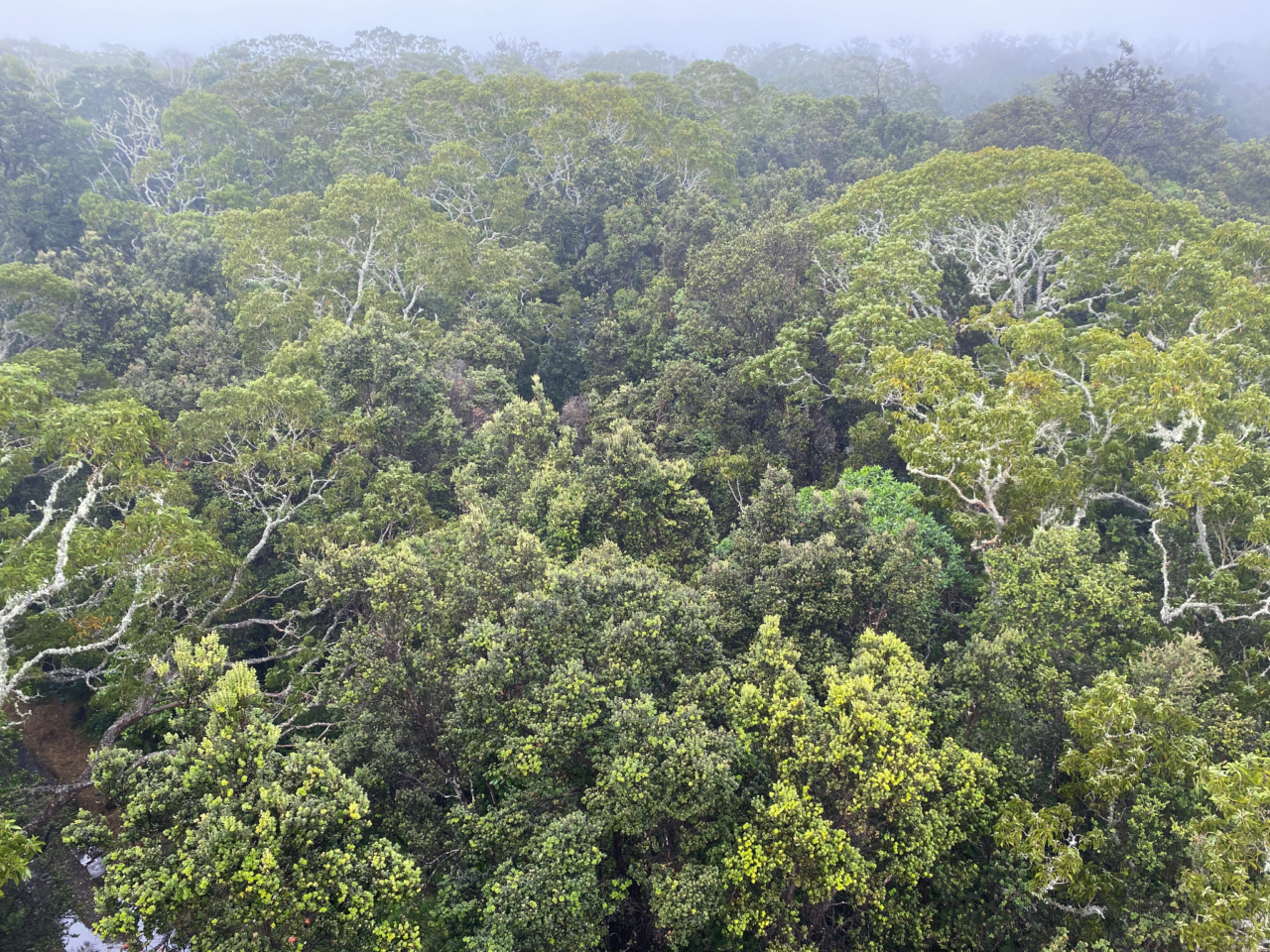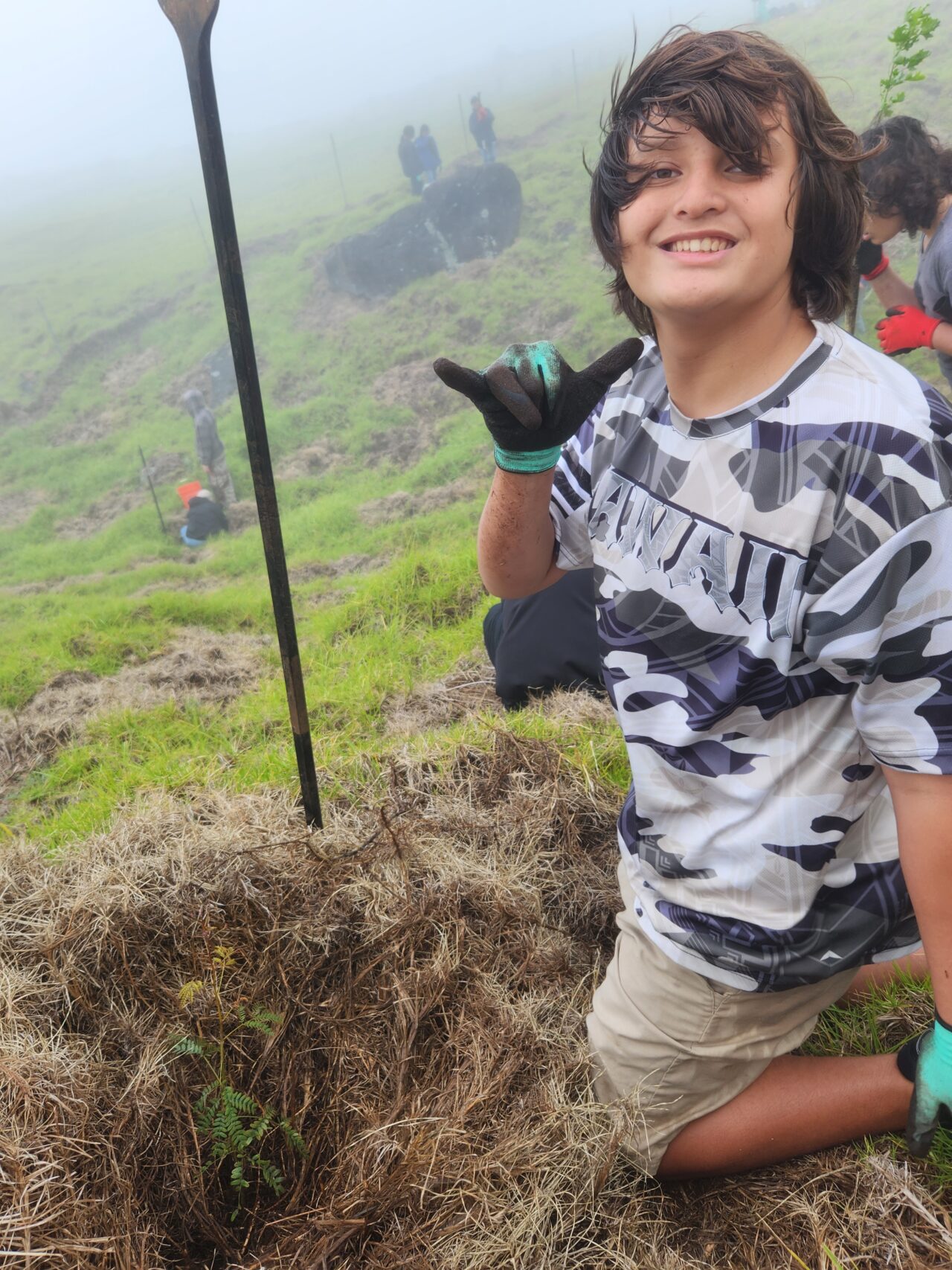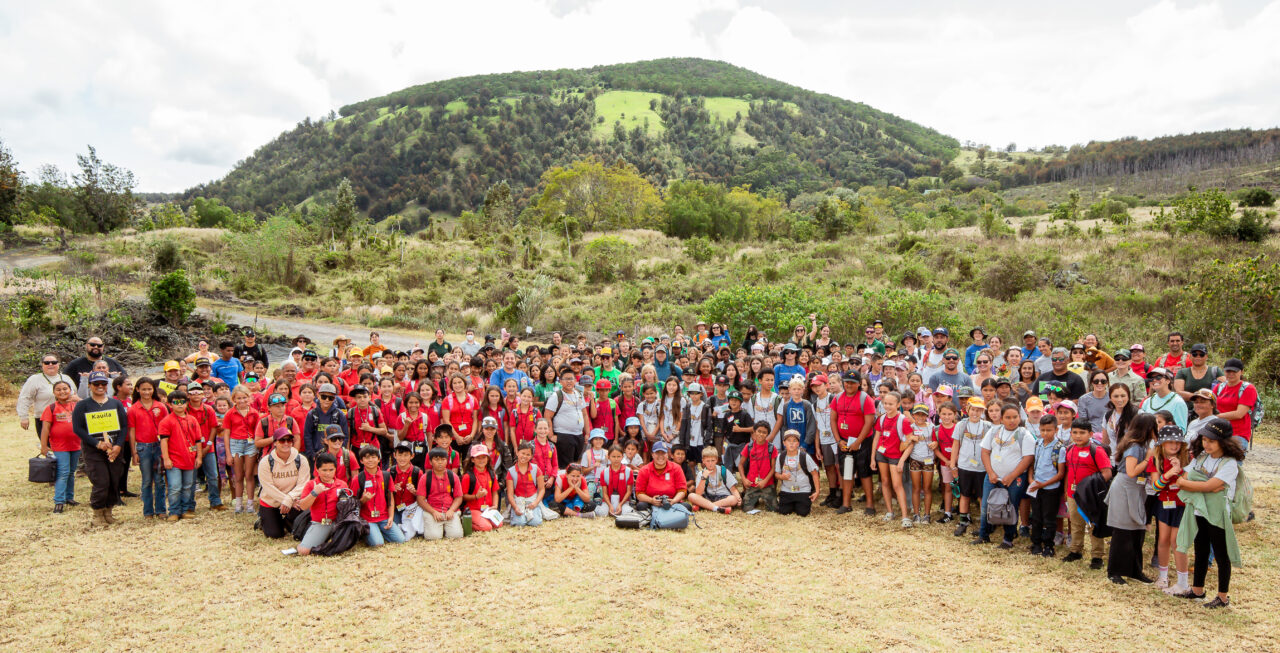Trees – Champions for People and Wildlife
The diverse forests of Hawai’i serve as wildlife habitat, sources of food and water, air purifiers and something more. The Hawaiian word for “tree” (kumu) also means “teacher.” And there is a lot to learn from the trees, especially if you work to protect them for future generations. This is exactly what the Akaka Foundation for Tropical Forests sets out to do.
The Akaka Foundation was founded to commemorate and continue the former U.S. Senator Daniel K. Akaka’s commitment to preserving Hawaiʻi’s natural and cultural resources – expanding on his foundational 1992 Tropical Forest Recovery Act. This legislation set aside lands on Hawaiʻi island in the upland forests of Laupāhoehoe and Puʻuwaʻawaʻa for scientific study and conservation. These forests are a regular site for the Akaka Foundation’s activities and programs, one of which is Pilina ʻĀina.
The fruit of a partnership between the USDA Forest Service, the Akaka Foundation and the University of Hawai’i at Mānoa, Pilina ‘Āina is a culturally grounded, ʻāina-based (land, ocean, that which feeds) education and career development program that provides hands-on learning opportunities to local students and their teachers through immersive conservation education programs. Pilina ʻĀina programs are grounded in Hawaiʻi life ways, and focused primarily on getting participants engaged with and learning from their greatest kumu, the native Hawaiian forest, as well as learning about and participating in climate change science and resource stewardship, while strengthening knowledge and relationships to Hawaiian lands.

Pilina ʻĀina has seen the impact of their efforts: in 2023, their team engaged 714 students, 48 teachers and over 100 community members through 43 classroom visits, 38 field courses – of which 10 were overnight – and their annual Puʻuwaʻawaʻa Biocultural Blitz, a one-of-a-kind bilingual event for 250 fourth graders in collaboration with many conservation agencies and organizations. They also table at community events and offer programs during school breaks and professional development programs for teachers to widen their reach.
Nature and Culture in Conservation
Hawai’i’s forests are unlike any others on earth – 90% of Hawaiian plants and animals occur nowhere else on the planet – but they are also under threat. Hawai’i has experienced rapid development and wildfire, leaving many forests dry or desiccated. Keystone ʻōhiʻa trees, for example, cover more than a million acres across Hawai’i, but the spread of a fatal fungal pathogen (called the “rapid ʻōhiʻa death”) has wiped out another million of this critical species.
Another challenge facing these forests is cultural. Young people could forget the names of these trees – their Hawaiian names. Native Hawaiian culture and language are intertwined in these forests’ histories. And, if you ask Leilā Dudley and the team at Pilina ʻĀina, they believe culture is key for protecting their future.
Leilā Dudley, the program coordinator who works with Pilina ʻĀina on behalf of the University of Hawaiʻi at Mānoa, says the program’s biocultural approach to these myriad issues includes Indigenous practices – like oli (chants), moʻolelo (ancestral stories) and kilo (observations) – and immersive experiences to cultivate pilina (relationship and connection) to ʻāina (land, ocean, that which feeds). It’s not just about the science of conservation, it’s also about reciprocal relationships with partner organizations and between people, land and culture. These relationships bring the program’s work to life. They also bring a radiant smile to Leilā’s face as she describes them.
“One of the things that drives us is this connection that we have to our forests and our native species… Now, as adults, we’re only starting to understand how special, how one-of-a-kind these kūpuna (these ancestors of ours) with roots here are.” – Leilā Dudley


In addition to Pilina ʻĀina, its program for students and teachers, the Akaka Foundation is also working to restore the ʻōhiʻa, a tree integral to Native Hawaiian culture that is dying at a large scale from fungal disease. As part of this work, they are identifying trees that are genetically resistant to illness through the ʻŌhiʻa Disease Resistance Program – much like American Forests’ work with the threatened whitebark pine in the western half of the continental United States.
The foundation is also educating the public about the ʻōhiʻa tree’s history and significance in Hawaiian beliefs, traditions and practices. And it’s working – Chloe Martins-Keliihoomalu, who works for the foundation, reports they’ve successfully identified 78 genetically resistant genotypes, or ”ʻōhiʻa champions,” that will help inform the defense against rapid ʻōhiʻa death.
Community-based Partnerships Paving the Way
ʻAʻohe pau ka ʻike i ka hālau hoʻokahi. (Not all knowledge is taught by one school.)

The team of passionate people behind the Akaka Foundation is made up of many individuals, groups and institutions that have come together:
- Community members who give their time and ʻike kūʻuna (traditional knowledge) for ʻāina-based education programming
- Lineal Hawaiian descendants who guide decision making for many of the organization’s programs
- Many partners and collaborators from government conservation organizations like the Hawaiʻi State Division of Forestry and Wildlife and other non-profit organizations
- Representatives from the USDA Forest Service and the University of Hawaiʻi at Mānoa who provide expertise and programmatic support
- The many funders without whom their programs would be possible: the Forest Service, an agency of the U.S. Department of Agriculture, Gear-Up, NOAA B-Wet, Batelle, the National Park Trust, the Every Kid Outdoors Program, among others
- The forests, of course, which always give abundantly
“Indigenous voices, people who are connected to ʻāina (to place) really need to be involved. They should be, always, at the forefront of the story.” – Aleysia Kaha, Pilina ʻĀina
The Akaka Foundation shows us what conservation looks like with place-based partnerships leading the way and Indigenous voices at the center. This is where culture and conservation progress together – where forests are recognized by their Hawaiian names, where native species are celebrated not just for their role in the ecosystem but also in Hawaiian values, and where everyone recognizes and respects their kuleana (their responsibility) to give back to the landscapes they call home.
The Pilina ʻĀina team wants to expand their impact and increase the number of students and teachers who can have immersive learning experiences. Right now, they can only reach schools and communities that are around Hilo, where the Akaka Foundation is based. You can help them grow their reach by donating to their van fundraiser – your donation will help their programs serve 4,025 students, 420 kumu – educators, their families and 1,180 community members over the next 4 years – 1,410 total people in 2024 alone.
ʻAʻohe hana nui, ke ʻalu ʻia. (No task is too big when done by all.)
The Friends of Hakalau National Wildlife Refuge is matching donations up to $20,000 – don’t miss the opportunity to double your impact for our friends at the Akaka Foundation: